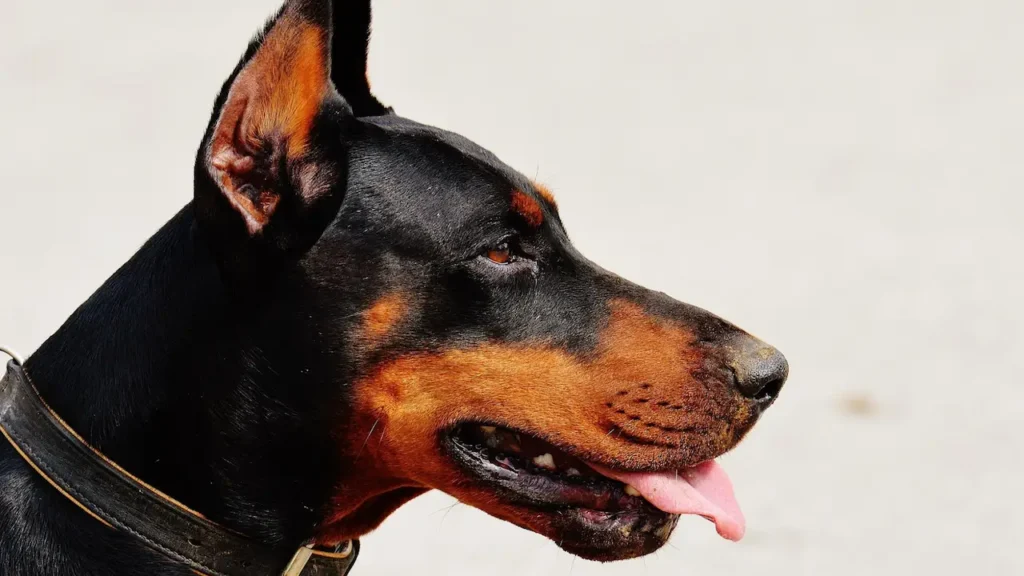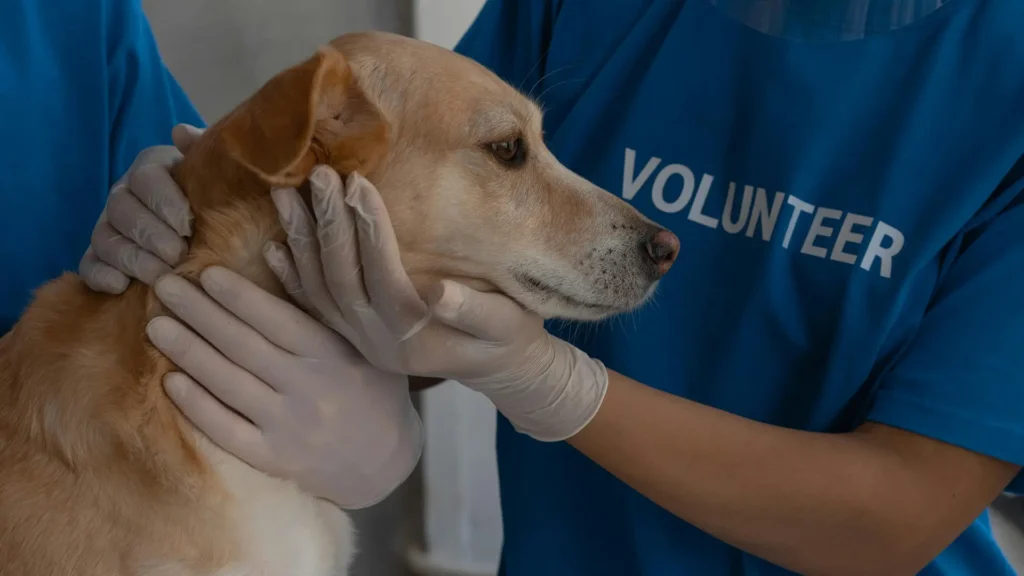Teach your dog to stay. It is one of the most important commands you can teach them. It helps them to learn basic obedience. It also ensures their safety in various situations. The “stay” command is a valuable tool for your dog life.
Why Teach the “Stay” Command?
The “stay” command is not just a simple trick. It’s a foundational skill that can significantly improve your dog’s behavior, safety, and overall relationship with you. Here are several reasons why mastering the “stay” command is crucial.
Stay Command Prevents Accidents
One of the most significant benefits of teaching your dog to stay is accident prevention.
Dogs are naturally impulsive. They may run off without thinking about potential dangers. They whimsically run into street, chase after another animal, and approach a stranger who may not be comfortable around dogs. Sometimes your dogs jump over the visitors. These situations make you awkward.
The “stay” command gives you control over your dog’s movements. By teaching your dog to stay, you can prevent them from entering dangerous situations.
Improves Focus and Self-Control
The “stay” command teaches your dog self-control and focus. They are essential skills for advanced training. Many dogs, especially puppies, struggle with impulse control. Teaching your dog to stay helps them learn patience and restraint.
When your dog learns to stay, they also learn to focus on you rather than distractions in their environment. This ability to concentrate will make future training sessions easier.
Builds Trust
Training your dog to stay is not just about obedience. It’s also about building trust. When your dog learns to stay on command, they begin to rely on you for guidance and reassurance. This trust strengthens the bond between you and your dog. This makes them feel secure and confident in your leadership.
Moreover, training sessions provide an opportunity for positive interaction between you and your dog. Every time you reward them for staying, you’re reinforcing the idea that listening to you leads to good things. This mutual respect and understanding create a deeper connection.
Enhances Socialization
Socialization is a key aspect of raising a well-behaved dog. The “stay” command plays a vital role in this process. Whether you have guests over at home, take your dog to the park, or bring them along to social events, a well-trained dog that stays on command will make interactions smoother and safer for everyone involved.
For instance, if you have friends or family visiting, you can ask your dog to stay in one spot while people enter your home. This prevents jumping, barking, and overwhelming behavior. This allows your guests to feel comfortable around your dog.
Similarly, when you’re out in public, asking your dog to stay ensures that they don’t wander off or cause disruptions. This makes outings more enjoyable for both of you.
Prepares for Emergency Situations
In emergency situations, having a dog that knows how to stay can be invaluable. For example, if you need to quickly answer the door, attend to a child, or handle an unexpected situation, you can command your dog to stay and ensure they remain calm and out of harm’s way.
This command gives you peace of mind. You already know that your dog won’t interfere or put themselves in danger during stressful moments.
Additionally, if your dog ever gets loose, the “stay” command can help you regain control. If your dog is trained to stay, you can call them back to you without worrying about them running further away into a dangerous situation.
Step-by-Step Guide to Teaching “Stay”
Now that you understand the importance of “stay” command. Let’s dive into how to teach it effectively. Here’s a step-by-step guide on how to teach your dog to stay effectively and patiently.
Start with Basic Obedience
Before introducing the “stay” command, make sure your dog has already mastered how to obey “sit” command or “down” command These stationary positions provide a solid foundation for teaching your dog to stay. A dog that is already sitting or lying down will find it easier to stay put. They are already in a calm and controlled position.
If your dog hasn’t yet learned these basic commands, spend some time working on them before moving on to “stay.” Once your dog can reliably sit or lie down on command, you’ll be ready to proceed.
Choose a Quiet Environment
The key to successful training is minimizing distractions. Choose a quiet place. Then start by practicing the “stay” command. A familiar environment helps your dog focus solely on you. This could be your living room, backyard, or any place where there are few external stimuli.
As your dog becomes proficient at staying, you can gradually introduce distractions. For example, you might practice in the backyard first. Then move to a busier area like the front yard or a park. This gradual progression will help your dog learn to stay in more challenging environments.
Use Clear Verbal Cues
Consistency is crucial when teaching any new command. Decide on a verbal cue for the command. Use this cue only for the training session and in real life. Most people use the word “stay.” You can do so. You can choose something else if you prefer.
Whatever word you choose, stick with it every time you give the command.
Consider pairing the command with a hand signal. Dogs are highly responsive to visual cues. Using a hand gesture reinforce the verbal command.
For example, you can hold your palm out flat, facing your dog, as you say “stay.” Over time, your dog will associate both the word and the gesture with the action of staying in place.
Begin with Short Durations

It’s important to start with very short durations. Dogs find it challenging to remain still for long periods right away. By starting small and gradually increasing the time, you set your dog up for success and avoid frustration.
Before giving the “stay” command, make sure your dog is in a stationary position. Sitting or lying down position is favorable. This provides a solid foundation for the “stay” behavior.
Once your dog is in position, clearly say the word “stay” while using the corresponding hand signal. For example, you might hold your palm out flat, facing your dog, as you give the command.
After issuing the “stay” command, take just one small step back. It’s important not to move too far at first. This can overwhelm your dog and cause them to break the stay prematurely.
Immediately return to your dog and reward them with a treat, praise, and affection if they stayed in place. Reward them for even the smallest success. At this stage, staying put for just a few seconds is a big accomplishment.
In the beginning, keep the duration of the “stay” very short—just a few seconds. You want to build your dog’s confidence by making it easy for them to succeed. As your dog becomes comfortable, you can gradually increase the time they are asked to stay.
After a few successful sessions of staying for 3-5 seconds, extend the duration to 10 seconds, then 20 seconds, and so on. Be patient and don’t rush this process. If your dog breaks the stay before you release them, calmly bring them back to the starting position and try again.
Introduce Distance
Once your dog can stay for a few seconds without moving, it’s time to add distance to the equation. Increasing the physical space between you and your dog helps them learn that staying is not dependent on your proximity. This step is crucial for real-world applications.
Here’s how to introduce distance:
Begin by taking just one step away from your dog after giving the “stay” command. Make sure to maintain eye contact and keep your body language calm and confident. Dogs are highly attuned to their owner’s energy. If you seem anxious, they may be more likely to break the stay.
After taking a step back, immediately return to your dog and reward them for staying in place. The key here is to reinforce the behavior quickly. Your dog understands that staying put earns them reward.
As your dog becomes comfortable with staying while you take one step back, start increasing the distance. Take two steps back, then three, and so on. Always return to your dog quickly and reward them for staying in place.
Some dogs may struggle with distance more than others. If your dog consistently breaks the stay when you move further away, go back to an earlier stage and practice shorter distances for a while longer. Remember, training should always be a positive experience. Don’t push your dog too far too fast.
Over time, you can work up to walking several feet away from your dog while they remain in the “stay” position. Eventually, you’ll be able to walk out of sight entirely.
Add Distractions Gradually
After your dog has successfully mastered staying in a quiet environment, it’s time to introduce distractions. Real-life situations are full of distraction. It’s important to teach your dog to stay focused.
Introduce mild distractions at first. For example, toss a toy on the ground or have someone walk by at a distance while your dog is in the “stay” position. If your dog remains in place, reward them generously. Gradually increase the level of difficulty. Ask your dog to stay while another person pets them. The goal is to teach your dog to focus on you and the “stay” command.
Next, take your training sessions outside. Start in a quiet outdoor area, such as your backyard. Then gradually move to busier environments. Each new location will present new challenges. Be patient and adjust your expectations accordingly.
When introducing distractions, it’s helpful to use high-value rewards to motivate your dog to stay focused. Distractions can be overwhelming. Offering a particularly enticing reward help keep your dog engaged.
If your dog struggles with a particular distraction, scale back the difficulty and work on that level for a while longer before moving forward.
Release Your Dog
Every “stay” command should end with a clear release cue. This lets your dog know that they are no longer required to stay and can move around freely. Without a release signal, your dog may become confused to break the stay. This can lead to inconsistent behavior.
To release your dog, decide on a word or phrase that will signal the end of the “stay” command. Common choices include “okay,” “free,” “release,” or “all done.” Whatever word you choose, make sure to use it consistently every time.
When you give the release cue, encourage your dog to move by stepping back or calling them to you. For example, you might say “okay” and then clap your hands to invite your dog to come to you. This reinforces the idea that the release word means they are free to move.
Always reward your dog after they’ve successfully completed the “stay” command and been released. This reinforces the entire sequence: staying put until released, and then being rewarded for their obedience. Over time, your dog will learn to associate the release word with positive reinforcement.
Practice Regularly
Consistency is key when teaching any new behavior. Even after your dog seems to have mastered the skill, it’s important to continue practicing regularly to reinforce the behavior and ensure that your dog retains the skill over time.
Set aside a few minutes each day to practice the “stay” command. These sessions don’t need to be long—5-10 minutes is plenty. Regular practice will help your dog retain the skill and prevent regression.
Look for opportunities to practice the “stay” command in real-life situations. For example, ask your dog to stay while you prepare their food, answer the door, and pick up their leash for a walk. This helps your dog generalize the behavior to different contexts.
By practicing regularly and incorporating the “stay” command into your daily routine, you’ll ensure that your dog remains well-behaved and responsive in a wide range of situations.
Tips for Success in Teaching Stay Command
Some dogs may take longer to learn than others. Be patient and avoid getting frustrated. Training should be a positive experience for both you and your dog.
Dogs have short attention spans. So keep training sessions to about 5-10 minutes at a time. You can do multiple sessions throughout the day.
Use treats, praise, and toys to reward your dog for staying. Positive reinforcement is the most effective way to train your dog. However, be mindful not to overfeed them during training. You can use small treats or break larger ones into pieces.
Never punish your dog for breaking the “stay” command. If they move before you release them, calmly bring them back to the starting position and try again. Training should be a positive and rewarding experience.
Always try to end each training session on a successful note. Even if your dog only stayed for a few seconds. Reward them and praise them before finishing the session.
Avoid doing mistake by yourself. One common mistake is increasing the duration or distance too quickly. If your dog isn’t ready, they may become frustrated. Take your time and progress at your dog’s pace.
Make sure you use a consistent release word and hand signal. Dogs thrive on positive reinforcement. If you forget to reward your dog for staying, they may lose motivation to follow the command. Always acknowledge their good behavior with treats, praise, and playtime.
Teaching your dog to stay is a valuable skill. It requires patience, consistency, and positive reinforcement. With time and practice, your dog will learn to stay reliably.




